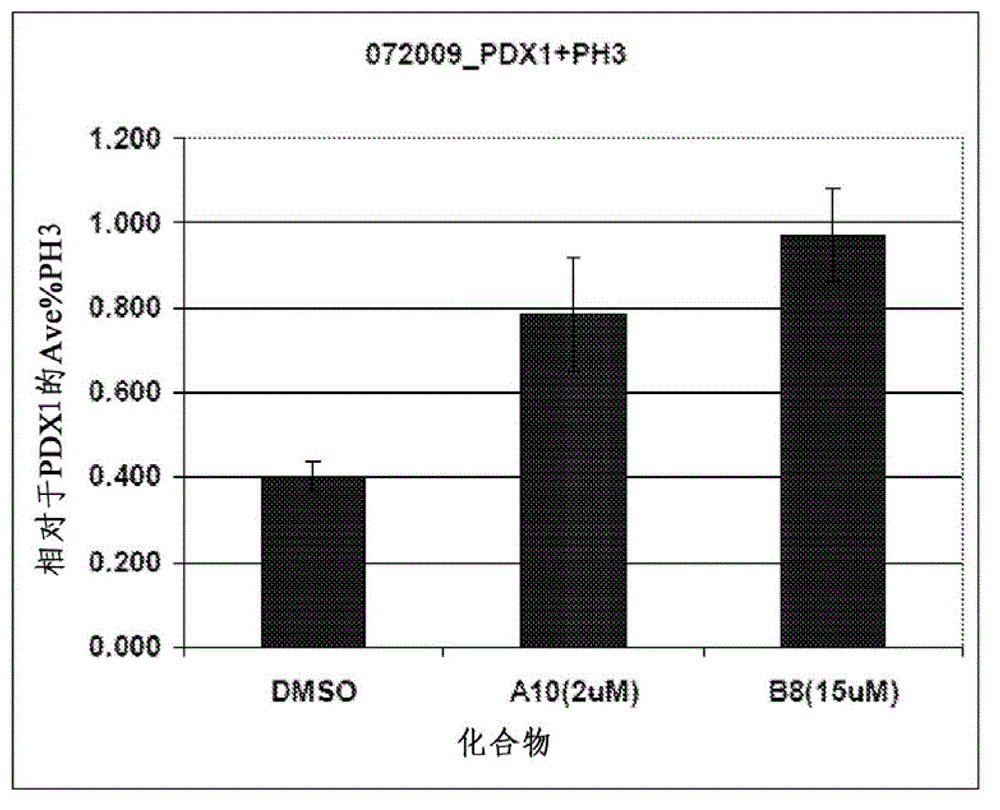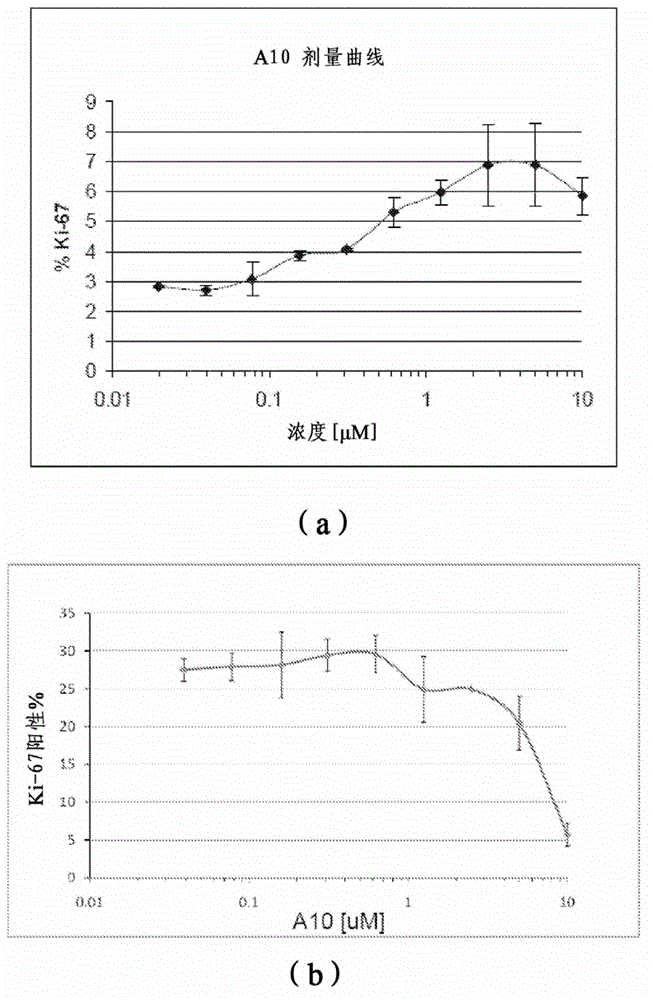Beta-cell replication promoting compounds and methods of their use
A technology of β cells and pancreatic cells, applied in biochemical equipment and methods, pancreatic cells, animal cells, etc., can solve the problem of human insulin deficiency, primary β cells do not have the same effect, and reduced pancreatic β cell mass and function And other issues
- Summary
- Abstract
- Description
- Claims
- Application Information
AI Technical Summary
Problems solved by technology
Method used
Image
Examples
Embodiment 1
[0443] Example 1: Screening Analysis
[0444]Rat islets were isolated as previously described in Gotoh M, Maki T, Kiyoizumi T, Satomi S and Monaco AP, An improved method for isolation of mouse pancreatic islets, Transplantation, 40, 437-438, 1985; The contents of which are hereby incorporated by reference in their entirety. The isolated islets were cultured overnight in a tissue culture incubator. The next morning, islets were trypsinized into colonies of 1-3 cells, which were resuspended in islet medium (Mediatech 99-786-CV; 10% FBS serum (Valley Biomedial BS3033); 8.3 mM glucose (Sigma G7528); 1X Penicillin / Streptomycin (Invitrogen 15070-063); 1X Glutamax (Invitrogen 35050-079)), and to a 96-well plate coated with 804G (rat bladder cancer cell line) conditioned medium (Sigma CLS3904) mid-hole spot plate. Cells were plated at a density of 60k cells / well, and greater than 95% of the cells were confirmed to be viable when plated. Islet cells were allowed to attach for 48 ho...
Embodiment 2
[0446] Example 2: PH3 induction by A10 and B8 production
[0447] β cells were treated with A10 (2 μM) or B8 (15 μM) using a protocol similar to that described in Example 1. Proliferating cells were visualized using a phospho-histone 3 antibody (Millipore 06-570). like figure 1 As shown in , both A10 and B8 increased the ratio of PH3 to PDX-1 relative to DMSO treatment of the control.
Embodiment 3
[0448] Example 3: A10 specifically increases β-cell replication
[0449] β cells or mouse skin were induced with 10 μM, 5 μM, 2.5 μM, 1.25 μM, 0.625 μM, 0.3125 μM, 0.156 μM, 0.078 μM, 0.04 μM, or 0.019 μM A10 using a protocol similar to that described in Example 1. Fibroblasts are processed. like figure 2 As shown in a, the percentage of Ki-67-positive β-cells increased in a dose-dependent manner. However, if figure 2 As shown in b, the percentage of Ki-67-positive mouse skin fibroblasts did not change when treated with A10. These results are consistent with little or no ADK expression in mouse fibroblasts (relative to mouse islets) observed by Western blot analysis (data not shown).
PUM
| Property | Measurement | Unit |
|---|---|---|
| diameter | aaaaa | aaaaa |
Abstract
Description
Claims
Application Information
 Login to View More
Login to View More - R&D
- Intellectual Property
- Life Sciences
- Materials
- Tech Scout
- Unparalleled Data Quality
- Higher Quality Content
- 60% Fewer Hallucinations
Browse by: Latest US Patents, China's latest patents, Technical Efficacy Thesaurus, Application Domain, Technology Topic, Popular Technical Reports.
© 2025 PatSnap. All rights reserved.Legal|Privacy policy|Modern Slavery Act Transparency Statement|Sitemap|About US| Contact US: help@patsnap.com



